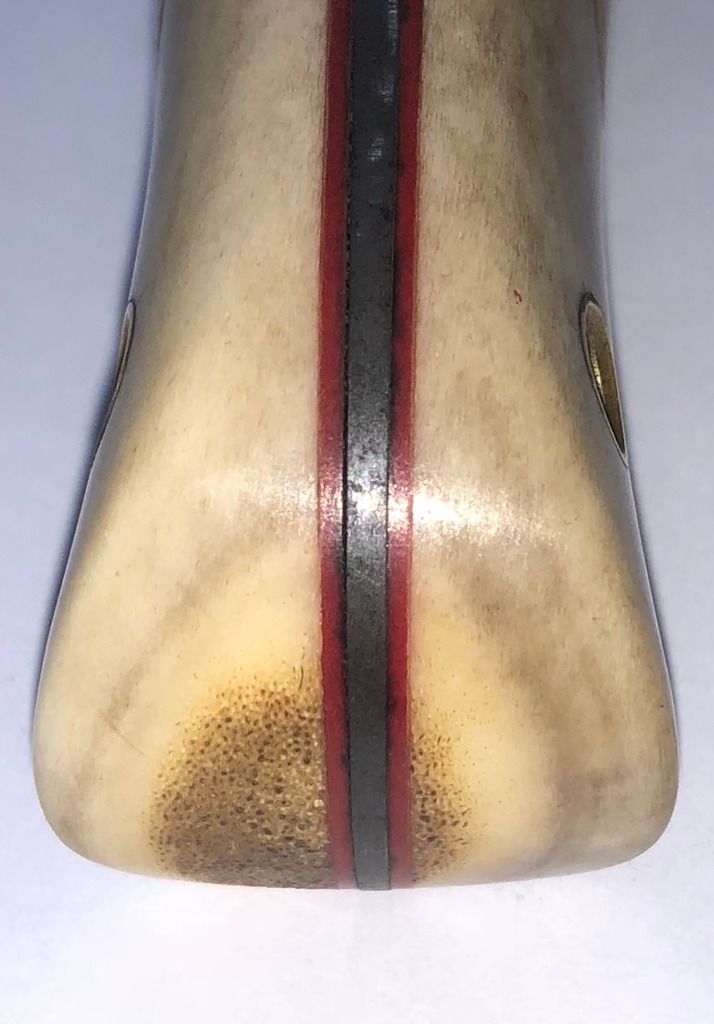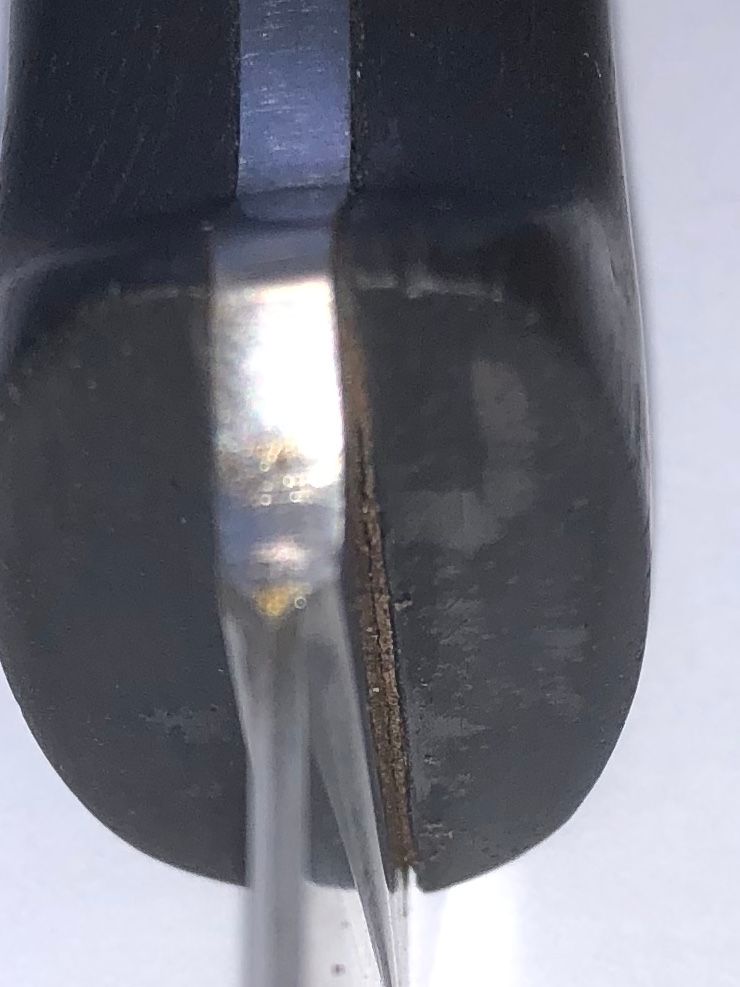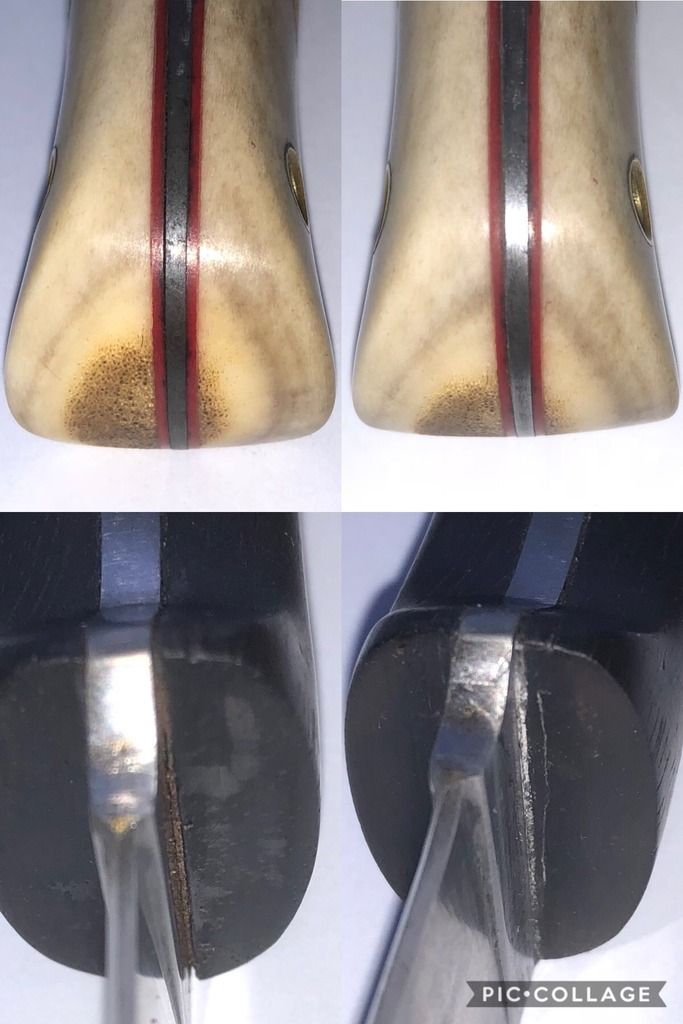I was having a look at my old faithful Ben Orford knife. It has served me well for many years now, and remains a firm favourite. I was horrified to notice that it seems the scale seems to be starting to come away from the tang. The gap is minute, but I can definitely suck air through it.

I also recently received a Condor Kephart for my birthday. I'm very taken with the feel of the knife, but the scales are not well fitted at the bolster area where the handle meets the blade.

So I'm looking for advice on how to plug these gaps. Any thoughts?
For the Kephart I was thinking I might just tape up the blade and try and force some epoxy in there, then sand the area down again as I'm not really fussed about the epoxy staining the scales. I don't think this will work for the Ben Orford though, as the gap is really minute.
Thanks in advance for the help!
Colin

I also recently received a Condor Kephart for my birthday. I'm very taken with the feel of the knife, but the scales are not well fitted at the bolster area where the handle meets the blade.

So I'm looking for advice on how to plug these gaps. Any thoughts?
For the Kephart I was thinking I might just tape up the blade and try and force some epoxy in there, then sand the area down again as I'm not really fussed about the epoxy staining the scales. I don't think this will work for the Ben Orford though, as the gap is really minute.
Thanks in advance for the help!
Colin


